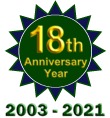|
Life is good
for a lot of people in the domain
business these days. Aftermarket
sales are booming, savvy registry
operators are seeing total
registrations rise in their
TLDs and competitive registrars
are watching their domains
under management (DUM)
soar.
While
sales, registrations and DUM are
the metrics we hear most often,
there is another one that is especially
critical in measuring true success
on the registration side of the
business. That is domain
renewal rates. If most
of your customers, whether they are
investors or developers, are
consistently renewing their domains
that's the best news of all for a
TLD operator. Renewal rates are especially
important for new gTLD (nTLD)
registries that offer a low,
|

Image
from Bigstock
|
|
We
got some extensive data-based
insight from Neha Naik,
Sr. Director of Channel
Partnerships at Radix,
into what one of the more
successful operators of multiple
TLDs has been seeing on the
renewal front.
Neha
noted, "When Covid hit in early 2020, domain names, along with all
sorts of digital products and services, saw a sharp boost followed by a
sustainable acceleration in growth. A report by McKinsey claimed that
10
years’ worth of progress in terms of ecommerce
transition was achieved within the first three months of the
lockdown. IBM said it was worth 5
years of digital progress. Adobe said that's between 4
to 6 years.
With
this came heightened activity in new business formations and existing
businesses going online to maintain continuity. This led to a direct
increase in the demand for domain names and other products related to
building websites.
The
overall domain market saw a significant jump in new registrations in
the first few months. At Radix, we saw that .online and
.store had the most uptake, growing by over 60%* between 2019 and
2020. Our other TLDs including .site, .fun and .tech also
saw a spike in registrations."
|

Neha
Naik
Sr. Director of Channel
Partnerships
Radix |
"Historically,
major events like this have been the trigger for disruption and change,
Neha said. "This time around, the pandemic ushered in a new spurt in
doing business online to the extent that owning a website was no-more a
good-to-have. It was a must. After all, do you even exist if you are
not available online in a post-pandemic world that we live in?
It
has been over a year since we witnessed these major market shifts. Looking
at the domain registration and renewals data since then led us to some
interesting insights about the market in general and our TLDs in particular.
When reviewing 1st time renewal rates for nTLDs registered in
the Jan - June 2020 period, the aggregate first time renewal rate remained
steady, very similar to 2019. Details of the collection of data and the
methodology used is explained in the notes below.**
The
nTLDs that make up the top 10 in terms of absolute renewals (based on a
monthly average) also remain the same. Most of them, however, have seen significant
growth in their 2021 monthly renewal numbers (absolute count of
renewals). Specifically looking at Radix TLDs, we see that .online, .store
and .site have seen a 60%+ increase in absolute first-time
renewals, and .tech has seen a growth of 35% for the same
period."


Putting
this into perspective, below is
a stacked view of the first time
renewals for .online in
comparison with other nTLDs, and
ranked by the absolute number of
1st time renewals. .online
has 60% higher first time
renewals compared to the next
ranked nTLD. Other
Radix TLDs make up for over 30%
of the top 10 renewals market
share.

"As renewals and renewal revenue are much more concrete indicators of market success
versus sheer registration volume, we took our study one step further to determine the renewal revenue generated for
Registrars," Neha said. "In order to do this, we used the 3rd party renewal data and applied standard renewal costs across registrars, assuming that the margin across TLDs will be more or less the same. We then stacked up all nTLDs in the order of those that generate the most renewal revenue for the
industry as shown in this graph:"
|

|
|
".online
leads the charts by adding over $2.3 million in first time renewal revenue (this does not include the registrar markup on registry cost), followed by .store
at rank 2, adding over $1.2 million in first time renewal revenue.
This revenue only includes 1st time renewals and doesn’t account for annuity premium renewal revenue
either," Neha added.

|
"It is worth noting that
.online alone accounts for
26% of overall renewal revenue amongst the top 10 nTLDs. And the 4 Radix TLDs that appear in the top 10 above account for
54% of the total renewal revenue generated by the top 10 nTLDs,"
Neha noted.
"While these are promising numbers, we will continue to track the performance of renewals through the next few months as well. We are eager to see how things shape up as we move beyond the peak of the pandemic."
Neha commented on why Radix
examines their renewal results
in such detail. She said, "At Radix, we have a fundamental belief:
you cannot improve what you don’t
measure. Constantly looking at the scoreboard is how we track the health and growth of the business. That the domain industry is the most measurable industry in the world only makes data tracking a lot more comprehensive."
"We understand that a TLD’s renewal performance is also
an indicator of the quality of its domains under
management. Ultimately, the true measure of success for any nTLD is qualitative usage, a goal fulfilled by marketing strategy and focus on renewals.
This philosophy has led to many innovative marketing initiatives that are reflected in the awareness campaigns we have executed in the recent past. From startin.tech to
pitch.tech to academy.get.online, Radix’s marketing campaigns are about enablement of new businesses."
"After all, the
growth in the domain industry is dependent on the growth in
businesses, old and new, going online. For us and the industry on the whole, it’s a unique opportunity to be at the starting point of the web presence of a business and
we’re excited about the times
ahead," Neha said in
closing.
Notes:
* This compared new registrations numbers between 2020 and 2019, and excludes registrations from Chinese registrars.
* All data excludes data from Chinese registrars. Given that the China market has differential pricing and other market nuances, the geo has been left out of this study. |
|
|



